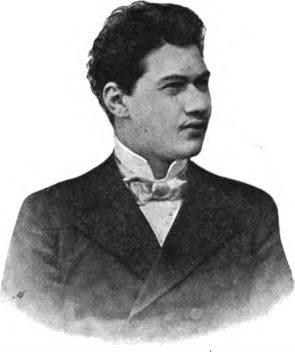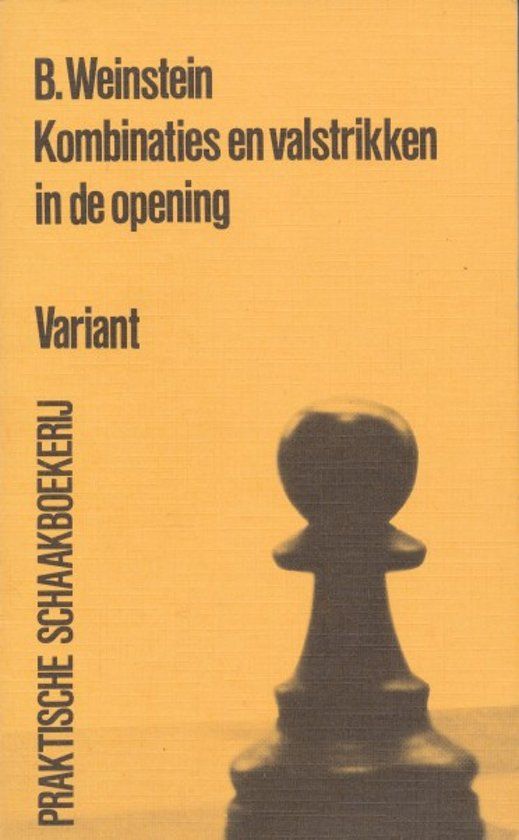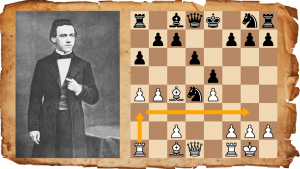
Going Back To Square One In Chess
The Austrian chess master Heinrich Wolf (1875-1943) is not exactly a household name for most chess players these days. Yet he is father to one of the most profound concepts in modern opening theory.
If people have heard of Wolf at all, it is usually for the reason that he was the angstgegner of the great Mikhail Chigorin, holding a crushing 7-0 record against him. He did have some decent tournament results in the first quarter of the 20th century, and he also was a second to Emanuel Lasker during his world championship match against Tarrasch (in 1908). A useful biographical overview of Wolf's career can be found here.
Now let me show you the following classical line in the Four Knights Game:
This is a variation almost everybody knows. It's arguably one of the most well-respected lines in the entire Open Games complex. It was played by legendary world champions of the past (Capablanca, Botvinnik, Petrosian, Spassky) as well as contemporary top players (Ivanchuk, Svidler, Grischuk, Short, Shirov).
The modest-looking retreat of the bishop to its original square was played for the first time by Wolf, in his game against Milan Vidmar, at the DSB (German Chess Federation) Congress, in 1906.

Wolf played it again a year later, in Vienna, against the same opponent. And although he scored only half a point out of two games, the variation was picked up shortly after that by great players such as Teichmann, Maroczy and Tartakower. Often, Bc1 was played in combination with a second bishop retreat (Bb5-f1) a few moves later, such as in the following game.
The idea of retreating your light pieces to "square one" is often surprising to chess players who have just started out playing chess. And yet it is a profound idea based on logic and a deep understanding of the dynamics of the light pieces.
Already in the early 17th century, the concept was quite well-known. The great Gioacchino Greco demonstrated a funny and instructive example:
Although initially, the retreat of a piece was typically associated with a tactical motif, such as in the above example, or for defensive purposes, even purely positional retreats occurred from time to time. Here's an intriguing example, played at the first international chess tournament in history.
You might think that this kind of amateurish-looking "taking your move back" (Bf8-g7-f8) was a result of poor understanding of the opening principles at the time. The opposite is true. Here's a modern example that puts it in context:
The 12th world champion, Anatoly Karpov, was known for his prophylactic bishop-retreats. Here's a beautiful example:
At this point, you might remark that actually, a bishop's retreat isn't really that spectacular. After all, bishops clearly retain their long-range power even from the bottom ranks of the board. (The same is true of rooks and queens.) What's the big deal here?
Yes, that's certainly true, and in fact, that is precisely why Heinrich Wolf's idea in the Four Knights Game was so brilliant in all its simplicity: he realized the potential of bishops even from their starting position.
Well, what about knights then? This must be much rarer, since knights don't have the long-range potential that bishops, rooks and queens do. But knights, too, effectively move backwards to square one from time to time. Here's one of the oldest chess games in modern chess known to us:
One of the funniest opening lines I've ever seen, which is actually not that well-known, features an even more spectacular knight retreat:
And lovers of Dutch chess curiosities and literature probably know the following game, which was mentioned by J.H. Donner in an article from 1965 titled Why do you not play a move? (collected in the wonderful The King, Chess Pieces). In it, Donner writes about the Dutch translation of a little book by the Russian chess journalist B. Weinstein with opening combinations and traps, called Kombinaties en Valstrikken in de Opening.

The book also contains a game by Donner himself.
Even our current world champion, Magnus Carlsen, has experimented with an early knight retreat, albeit so far only in a blitz game:
Carlsen certainly wasn't the first world champion to do so. Here, for instance, is a bit of humor by the magician from Riga, Mikhail Tal, also from a blitz game:
Although on this particular occasion, the idea of defending d4 by means of playing Ng1 (trying to profit from the position of the light-squared bishop on g4) didn't work out very well, the motif is known from other, similar situations, such as the King's Indian Defense (1.d4 Nf6 2.c4 g6 3.Nc3 Bg7 4.e4 d6 5.Nf3 Bg4 6.Be2 0-0 7.Be3 Nfd7 8.Ng1!?) and some lines in the Pirc.
And then there's this one from the English Opening:
There are many other (opening) examples where knights retreat effectively, and I invite you to mention your favorite ones in the comments. Surprisingly often, pieces work most effectively from the back rank. Despite the saying, going back to square one can sometimes be a perfectly healthy thing to do!



